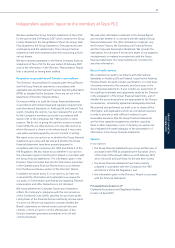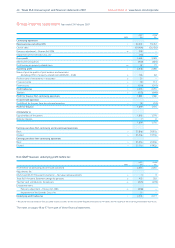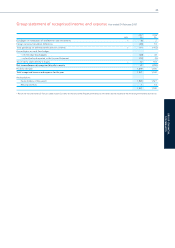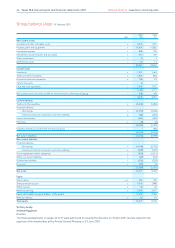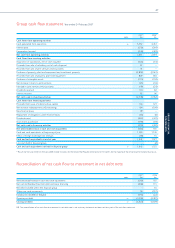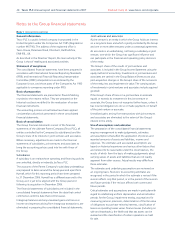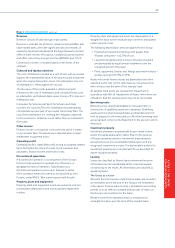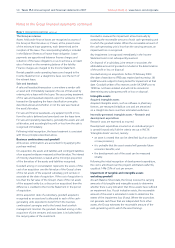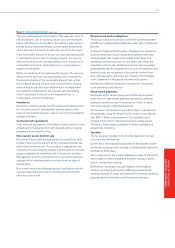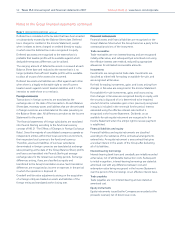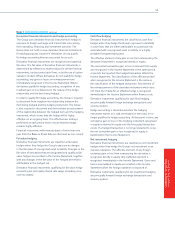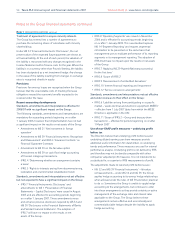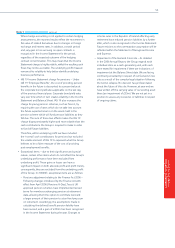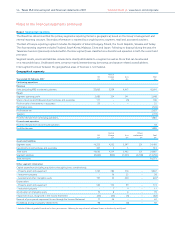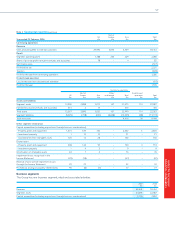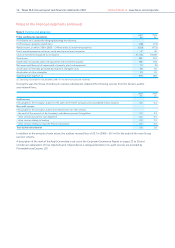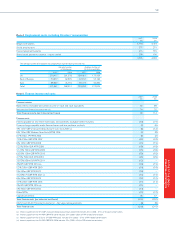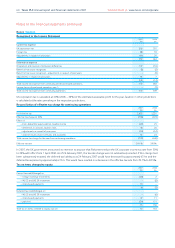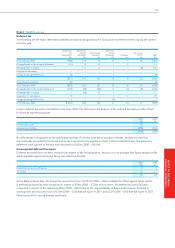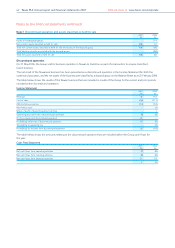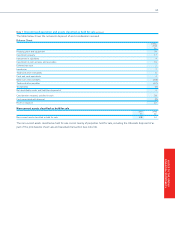Tesco 2007 Annual Report Download - page 55
Download and view the complete annual report
Please find page 55 of the 2007 Tesco annual report below. You can navigate through the pages in the report by either clicking on the pages listed below, or by using the keyword search tool below to find specific information within the annual report.
Note 1 Accounting policies continued
Derivative financial instruments and hedge accounting
The Group uses derivative financial instruments to hedge its
exposure to foreign exchange and interest rate risks arising
from operating, financing and investment activities. The
Group does not hold or issue derivative financial instruments
for trading purposes, however if derivatives do not qualify
for hedge accounting they are accounted for as such.
Derivative financial instruments are recognised and stated at
fair value. The fair value of derivative financial instruments is
determined by reference to market values for similar financial
instruments, by discounted cash flows, or by the use of option
valuation models. Where derivatives do not qualify for hedge
accounting, any gains or losses on remeasurement are
immediately recognised in the Income Statement. Where
derivatives qualify for hedge accounting, recognition of any
resultant gain or loss depends on the nature of the hedge
relationship and the item being hedged.
In order to qualify for hedge accounting, the Group is required
to document from inception the relationship between the
item being hedged and the hedging instrument. The Group
is also required to document and demonstrate an assessment
of the relationship between the hedged item and the hedging
instrument, which shows that the hedge will be highly
effective on an ongoing basis. This effectiveness testing is
performed at each period end to ensure that the hedge
remains highly effective.
Financial instruments with maturity dates of more than one
year from the Balance Sheet date are disclosed as non-current.
Fair value hedging
Derivative financial instruments are classified as fair value
hedges when they hedge the Group’s exposure to changes
in the fair value of a recognised asset or liability. Changes in the
fair value of derivatives that are designated and qualify as fair
value hedges are recorded in the Income Statement, together
with any changes in the fair value of the hedged item that is
attributable to the hedged risk.
Derivative financial instruments qualifying for fair value hedge
accounting are principally interest rate swaps (including cross
currency swaps).
Cash flow hedging
Derivative financial instruments are classified as cash flow
hedges when they hedge the Group’s exposure to variability
in cash flows that are either attributable to a particular risk
associated with a recognised asset or liability, or a highly
probable forecasted transaction.
The effective element of any gain or loss from remeasuring the
derivative instrument is recognised directly in equity.
The associated cumulative gain or loss is removed from equity
and recognised in the Income Statement in the same period
or periods during which the hedged transaction affects the
Income Statement. The classification of the effective portion
when recognised in the Income Statement is the same as
the classification of the hedged transaction. Any element of
the remeasurement of the derivative instrument which does
not meet the criteria for an effective hedge is recognised
immediately in the Income Statement within finance costs.
Derivative instruments qualifying for cash flow hedging
are principally forward foreign exchange transactions and
currency options.
Hedge accounting is discontinued when the hedging
instrument expires or is sold, terminated or exercised, or no
longer qualifies for hedge accounting. At that point in time, any
cumulative gain or loss on the hedging instrument recognised
in equity is retained in equity until the forecasted transaction
occurs. If a hedged transaction is no longer expected to occur,
the net cumulative gain or loss recognised in equity is
transferred to the Income Statement.
Net investment hedging
Derivative financial instruments are classified as net investment
hedges when they hedge the Group’s net investment in an
overseas operation. The effective element of any foreign
exchange gain or loss from remeasuring the derivative is
recognised directly in equity. Any ineffective element is
recognised immediately in the Income Statement. Gains and
losses accumulated in equity are included in the Income
Statement when the foreign operation is disposed of.
Derivative instruments qualifying for net investment hedging
are principally forward foreign exchange transactions and
currency options.
53
NOTES TO THE GROUP
FINANCIAL STATEMENTS


